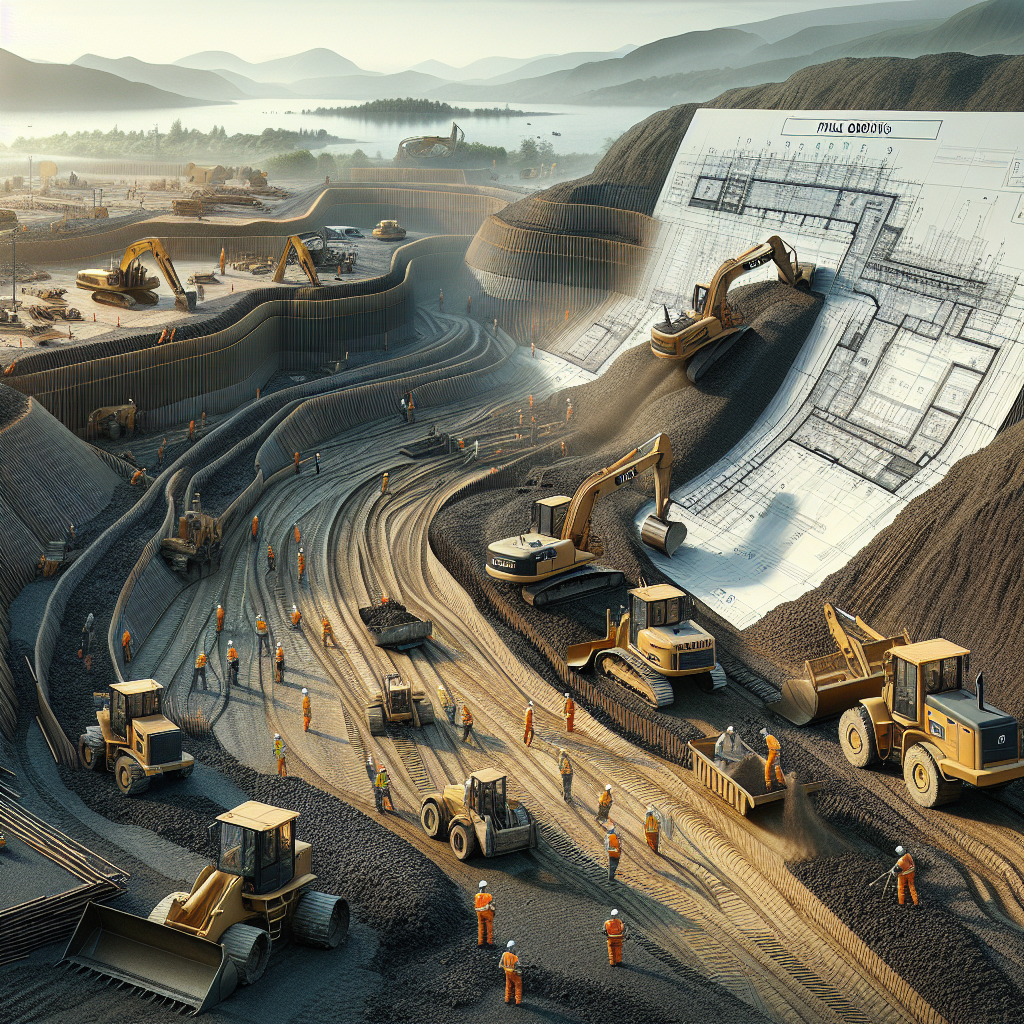Grading: The Silent Foundation of Every Construction Project
From the skyscraper in New York to the humble bungalow in Iowa and everywhere in between, the rooted foundation is largely unseen but it’s the cornerstone of every building project.
But what creates the solid soil that these structures are built on?
Enter Grading.
Grading is not just a process, it’s the very platform on which our man-made world is built upon.
The life of a construction project is a series of stages one more intricate than the next, each a stepping stone to the final lap – the final grade. Each phase depends heavily on the previous one, just as good soil depends on good weather.
So, fasten your safety helmets; we’re about to dive headfirst into the world of grading. From exploring the basics to understanding the nitty-gritty of the processes involved, we’ve got you covered.
Table of Contents
Exploring Final Grade: A Key Construction Term
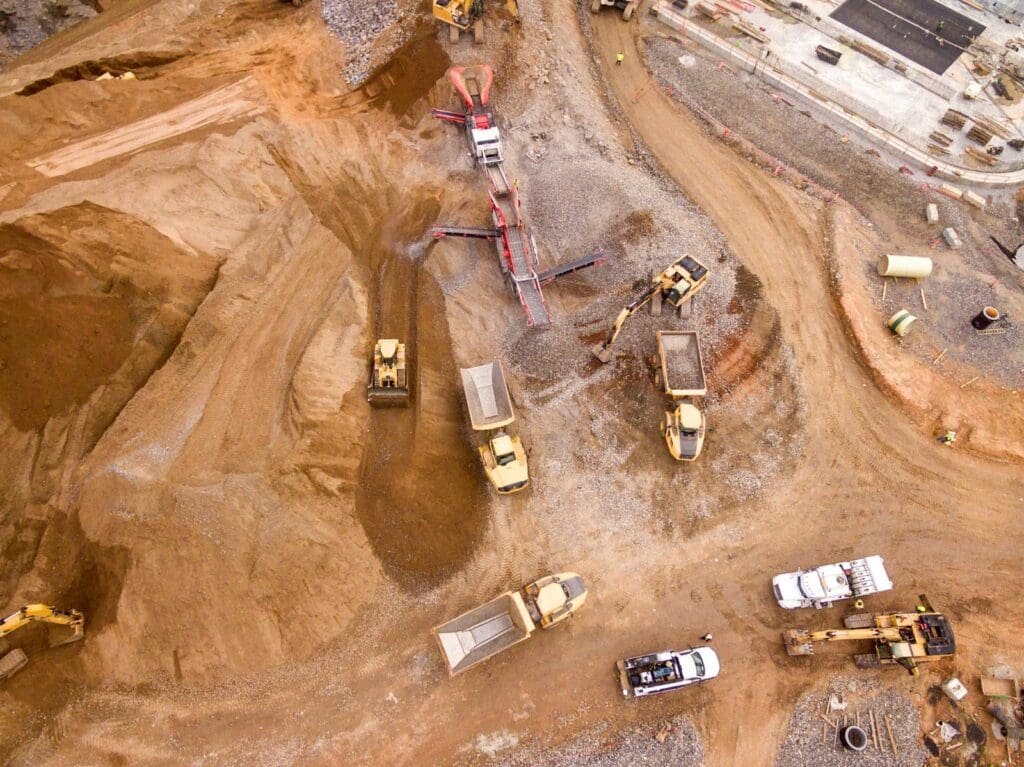
Defining Final Grade
The term ‘Final Grade’ is commonly used within the world of construction. This term signifies the last step in the process of grading, which is ensuring the evenness and stability of the ground for the purposes of building, landscaping, or laying foundations.
Why Final Grade Matters
Final grade matters because of its central role in the construction process. When the final grade isn’t properly executed, several issues can arise, such as improper drainage, building instability, and challenges with landscaping. These practical implications make understanding the concept of final grade both valuable and necessary.
The Process to Attain the Final Grade
The process required to achieve the final grade involves a series of grading steps, which are:
- Starting with the rough grade, which encompasses the initial steps taken to bring the lot’s terrain to just below the desired level.
- Next comes the addition of materials, usually soil or sand, to create the conditions for the final grade.
- Lastly, the final grade is achieved by smoothing out these added materials to establish the expected elevation and ensure proper water drainage.
The Parameters for a Successful Final Grade
Table: Successful Final Grade Parameters
| Parameter | Description |
|---|---|
| Elevation | The final grade should meet the planned elevation for the project. |
| Slope | Water drainage is dependent on a correct slope in the final grade. |
| Compaction | The final grade must be adequately compacted to ensure stability. |
Applying these parameters will ensure that your construction project has a sound and stable final grade upon which to build.
Getting the Final Grade Right
Accomplishing the correct final grade requires precision, training, and sometimes, even some sophisticated equipment. For any construction project, getting the final grade right is a fundamental prerequisite for progressing to the steps that follow.
By taking this stage of construction seriously, builders ensure long-term project success and help avoid costly, time-consuming adjustments down the road.
The Role of Grading in Modern Construction
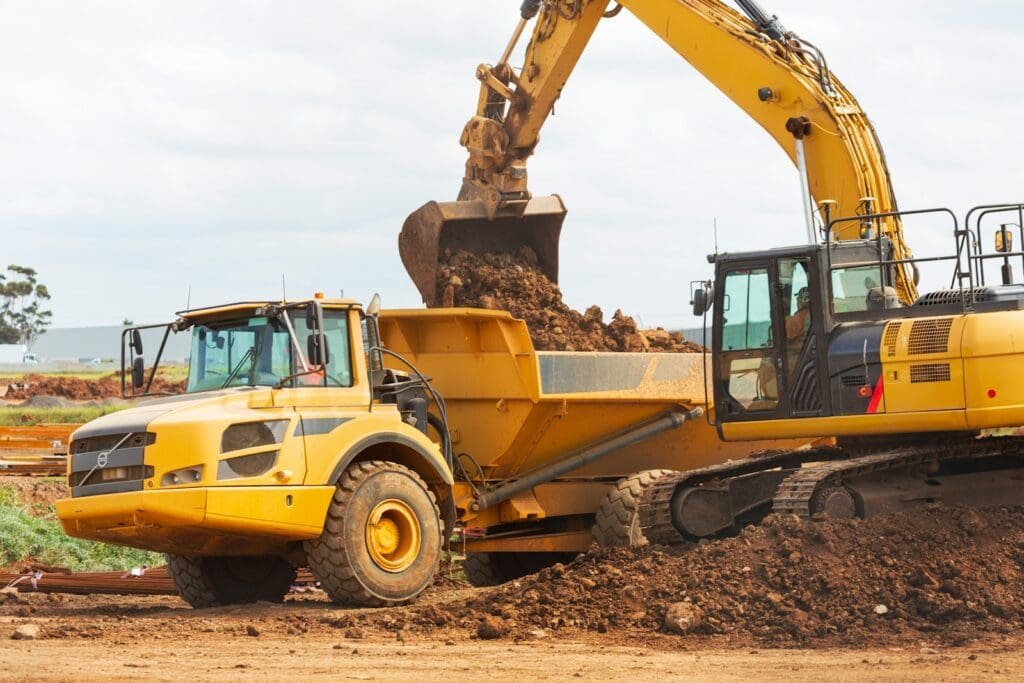
Understanding the Basics of Grading
In the field of construction, grading is essentially the process of leveling or sloping the ground to prepare it for building. It’s a vital component of any construction project, as it lays the groundwork – quite literally – for the building to follow.
Proper grading ensures a solid, stable base for construction, and helps to prevent potential issues further down the line, like water damage or foundation instability.
Necessary Steps: Moving from Rough to Final Grading
Before achieving the final grade, a construction crew must pull off the rough grade first. This initial step involves basic preparation of the lot, including the clearing of vegetation and the general shaping of the ground.
The rough grade sets a preliminary, almost-finished level for the project but remains usually about an inch below the desired final grade.
Following rough grading, the project moves forward to the final grade phase. Here, precision is crucial. Even minute changes can profoundly impact project outcomes, especially concerning drainage, which needs a correct slope to function.
Key Ingredients: Soil and Sand
A critical aspect of grading, especially when it comes to the final grade, revolves around the addition of materials. The type of material can vary, but it generally includes either soil or sand.
These materials are spread over the rough grade to raise it to the level of the final grade. Throughout this process, a construction crew focuses on filling, smoothing, and adapting the soil to align with the prescribed parameters.
Parameters Matter: A Snapshot of Grading Success
Table: Grading Metrics Worth Your Attention
| Metric | Description |
|---|---|
| Drainage | The right grading promotes effective drainage, mitigating the risk of water damage. |
| Stability | Good grading ensures that the ground is stable and able to withstand the weight of the structure on top of it. |
| Compliance | Grading has to comply with local building codes and regulations for safety reasons. |
The Crucial Role of Precision in Grading
Getting grading right isn’t just important – it’s non-negotiable. From the first scoops of the rough grade to the finishing touches of the final, every step demands attention to detail, skill, and precision. With the weight of the whole project (literally and metaphorically) resting on it, it isn’t an exaggeration to say that success on site often begins with the quality of the grade beneath.
Embracing Sophistication: Technology in Grading
Increasingly, construction firms leverage technology to assist their grading efforts. For instance, GPS-guided equipment can help to achieve a more precise final grade, yielding both time and cost efficiencies. While the human eye and human judgement remain crucial elements of the grading process, innovative technology can support accuracy and enhance project outcomes.
Affecting the Outcome via Grading
A well-executed grade acts as a solid foundation for any construction project. It establishes the groundwork that, quite literally, holds up every other phase. By focusing on the grade first, a construction crew can help ensure the rest of the project stands as solid, secure, and successful. When it comes to construction, a well-executed grade is the bedrock upon which everything else is built.
Defining Subgrade: Another Essential Construction Term
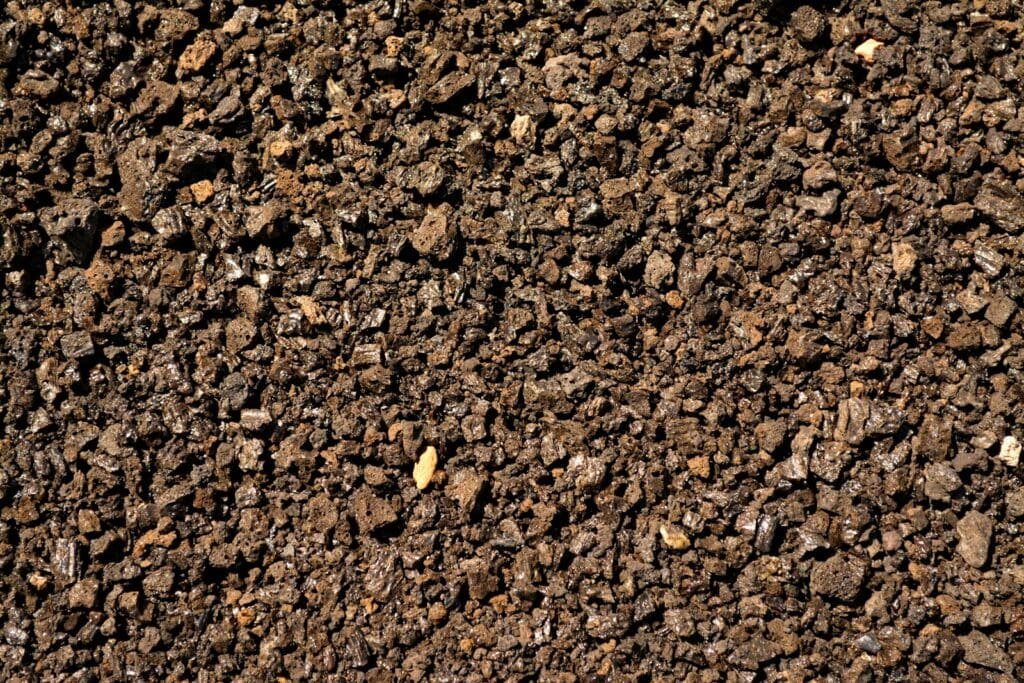
What is a Subgrade?
Subgrade, while less common in everyday parlance, is an important concept in the construction field, where the term is used to describe the native soil that is prepared and compacted to support a structure or a roadway. The subgrade is the ground’s very bottom level and provides the foundation upon which the final grade lies.
Role and Importance of Subgrade
Correct subgrade preparation is vital for any construction project because it provides the fundamental base on which all subsequent work rests. Improper subgrade can result in numerous structural issues, like settlement, heaving, or cracking. With a well-prepared subgrade, however, one can ensure the stability and longevity of whatever structure is to be built.
The Subgrade Process
Creating a sturdy subgrade involves several steps, including:
- Removing any present vegetation, topsoil, and organic material, all of which could decay and compromise structural integrity.
- Excavating to the appropriate depth, in accordance with the type of structure to be built.
- Compacting the soil to reduce future settlement and ensure stability.
Distinguishing Subgrade from Final Grade
Although subgrade and final grade serve similar purposes and both involve leveling and compaction, they are different elements of the construction process. In essence, the subgrade is the underlying, compacted native soil, whereas the final grade is the last stage of grading, involving the addition and smoothing of material. It’s crucial to remember that the subgrade serves as the primary foundation and support, while the final grade is responsible for the ground’s smoothness, proper drainage, and right elevation.
Table: Differences between Subgrade and Final Grade
| Construction Aspect | Subgrade | Final Grade |
|---|---|---|
| Material | Native Soil | Added Soil/Sand |
| Purpose | Foundation and Support | Elevation, Smoothness, Drainage |
| Process | Removal and Compaction | Addition and Smoothing |
Linking Subgrade Quality to Final Grade Success
Executing a successful final grade heavily depends on proper subgrade preparation. A sound subgrade provides a solid foundation that ensures the final grade’s stability and the effectiveness of its water drainage function. This recognition of the interplay between subgrade and final grade can lead to sturdy construction, avoiding remedial works and potential complications.
Overcoming Subgrade Challenges
While subgrade preparation may seem straightforward, it often presents challenges. For example, poor soil conditions may require remediation or reinforcement before construction can begin. However, with the correct construction techniques, knowledge, and sometimes applicable technology, these problems can be successfully mitigated. This, in turn, establishes an excellent base for the final grade, ensuring a safe, sound, and stable project execution.
Tangible Aspects of Final Grade
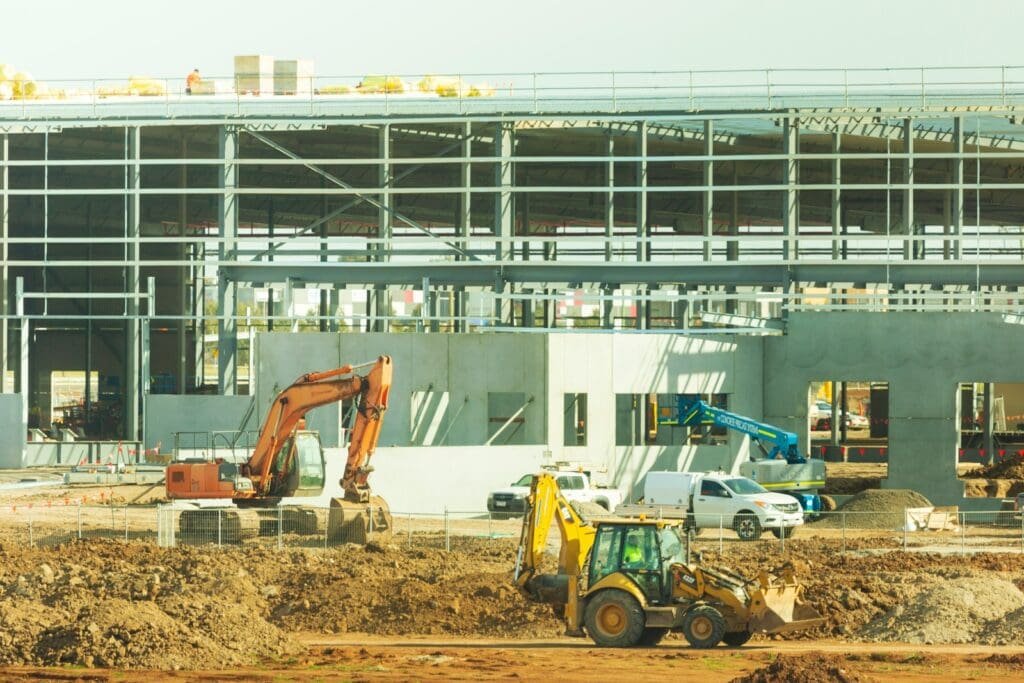
Analyzing the Aspect of Elevation
The aspect of elevation in the final grade is essentially about determining and attaining the desired height of the ground for the proposed construction. This is measured from a set reference point, commonly known as the datum. The height, or elevation, is key to facilitating structural stability and proper drainage.
Tools for Measuring Elevation
Some of the tools used for measuring elevation during grading include:
- Automatic Levels: These tools provide a quick and accurate means to measure differences in elevation.
- Laser Levels: High-tech tools offering improved accuracy over long distances.
- GPS: A highly precise option for measuring elevations and coordinates on larger sites.
Exploring the Slope
The slope of the terrain is another critical factor in the final grading. This refers to the inclined surface, which allows for proper water flow away from the construction, preventing potential water-related damage. The slope is typically expressed as a percentage or a ratio, indicating the difference in height over a particular distance.
Slope Measurement Techniques
Slope measurement techniques include:
- Manual Calculation: Measurement of the rise and run of the slope to calculate the slope percentage.
- Slope Meters: These tools measure slope angles or percentage grades.
- GPS Systems: These systems can accurately measure not only the slope’s angle, but also its direction.
Determining Compaction
In the process of grading, compaction refers to the densification of the soil. Proper compaction enhances load-bearing capacity, reduces settlement, and improves overall site stability.
Assessing Compaction Levels
Compaction can be assessed using a few different methods:
- Proctor Test: This laboratory test determines the maximum compaction a specific type of soil can achieve.
- Nuclear Density Test: A field test that measures the compaction and moisture content of the soil.
- Sand Cone Method: Another field test where the soil’s dry density is measured and compared to the Proctor Test.
Real-World Application: The Art of Grading
The Balance Between Science and Skill
Grading, especially achieving the final grade, is both a science and an art. It requires the right knowledge, expertise, and equipment. It also requires a keen eye for detail and a sensitivity to the land itself.
Expertise Makes a Difference
While the concept of grading may seem straightforward – leveling the ground to an appropriate height and slope – the actual execution is anything but simple. It requires a seasoned professional who can assess the soil type, the level of compaction required, the appropriate slope for efficient drainage, and many more complex factors. In other words, expertise can be the deciding factor between a well-executed final grade and a disastrous one.
Emphasizing the Role of Equipment
Though grading has been around since ancient times, the method has evolved significantly with technological advancements. When done on a larger scale, grading requires sophisticated equipment designed to move earth and materials to achieve a smooth, uniform surface at the right elevation and slope.
Deploying Essential Grading Tools
A sampling of commonly used equipment includes:
- Bulldozers: Used for creating a rough grade over large areas by moving large amounts of earth.
- Graders: Used for refining the grade by cutting, moving, and spreading soil.
- Rollers: Used for compacting the soil and making the grade more stable.
- GPS Systems: Used for increased accuracy in achieving the correct grade levels.
Bringing Subgrade to the Forefront
Tackling Subgrade: How It’s Done
Preparing the subgrade requires a keen understanding of the nature of the native soil. A subgrade that is not appropriately prepared can lead to serious issues during construction.
Opting for Soil Stabilization Techniques
In some cases, due to unfavorable soil conditions, soil stabilization techniques might be necessary to improve the soil’s strength and durability. Techniques commonly used include lime stabilization or cement stabilization.
The Interplay of Subgrade and Final Grade
Not entirely separate entities, the subgrade and the final grade are two stages of the same continuum. A subgrade that is properly prepared can make the process of achieving the final grade more straightforward, while an improperly prepared subgrade can make the final grade nearly impossible to attain.
Looking at the Common Link: Compaction
One important factor that subgrade and final grade share is compaction. The compaction of the subgrade, or the densification of the soil beneath the final grade, is equally crucial to the final grade’s success. Proper compaction technique and strategy can greatly affect the stability and longevity of the construction project.
Addressing Subgrade Challenges
Subgrade presents its share of challenges. Whether it’s dealing with the wrong type of soil, dealing with a high water table, or facing steep slopes – preparing a subgrade is not without complications.
Finding Solutions for Subgrade Issues
Construction professionals employ numerous remedies for addressing various subgrade challenges, such as:
- Use of Geotextiles for soil separation and stabilization.
- Installation of Drains for controlling the water table beneath construction.
- Adoption of Terracing or Retaining Walls to manage steep slopes.
Understanding and foreseeing these potential issues can greatly assist in the successful implementation of the subgrade in a construction project. The key is in addressing them head-on with knowledge, experience, and the right tools.
Pulling It Together: Final Grade Essentials
The final grade paves the path for successful construction projects. Its role in providing stability, facilitating water drainage, and establishing the desired terrain is pivotal to the process. It’s not just about stuffing materials and smoothing them out; it’s an art that requires precision, forethought, and professional training.
Paying due attention to parameters such as planned elevation, correct slope, and appropriate compaction are significant aspects that determine the competence of a final grade. To nail the final grade is akin to ensuring the robustness and longevity of the structures built upon it.
Adjourned with the statement that proper execution of this crucial step steers construction projects to desired results, we underscore the assertion that achieving a successful final grade is indeed a game-changer in the field of construction.
FAQs – Frequently Asked Questions
1. What is the ‘Final Grade’ in construction?
The term ‘Final Grade’ is commonly used within the world of construction. This term signifies the last step in the process of grading, which is ensuring the evenness and stability of the ground for the purposes of building, landscaping, or laying foundations.
2. Why does Final Grade matter?
Final grade matters because of its central role in the construction process. When the final grade isn’t properly executed, several issues can arise, such as improper drainage, building instability, and challenges with landscaping. These practical implications make understanding the concept of final grade both valuable and necessary.
3. What is the process to attain the Final Grade?
The process required to achieve the final grade involves a series of grading steps:
- Starting with the rough grade, which encompasses the initial steps taken to bring the lot’s terrain to just below the desired level.
- Next comes the addition of materials, usually soil or sand, to create the conditions for the final grade.
- Lastly, the final grade is achieved by smoothing out these added materials to establish the expected elevation and ensure proper water drainage.
4. What are the parameters for a successful Final Grade?
| Parameter | Description |
|---|---|
| Elevation | The final grade should meet the planned elevation for the project. |
| Slope | Water drainage is dependent on a correct slope in the final grade. |
| Compaction | The final grade must be adequately compacted to ensure stability. |
5. How important is it to get the Final Grade right?
Accomplishing the correct final grade requires precision, training, and sometimes, even some sophisticated equipment. For any construction project, getting the final grade right is a fundamental prerequisite for progressing to the steps that follow. By taking this stage of construction seriously, builders ensure long-term project success and help avoid costly, time-consuming adjustments down the road.
6. What role does grading play in modern construction?
In the field of construction, grading is essentially the process of leveling or sloping the ground to prepare it for building. Proper grading ensures a solid, stable base for construction, and helps to prevent potential issues further down the line, like water damage or foundation instability.
7. What are the necessary steps from rough to final grading?
Before achieving the final grade, a construction crew must complete the rough grade first. This initial step involves basic preparation of the lot, including the clearing of vegetation and the general shaping of the ground. Following rough grading, the project moves forward to the final grade phase where precision is crucial for successful outcomes.
8. What materials are used in final grading?
The type of material can vary, but it generally includes either soil or sand. These materials are spread over the rough grade to raise it to the level of the final grade. The construction crew focuses on filling, smoothing, and adapting the soil to align with the prescribed parameters.
9. What are some common grading metrics?
| Metric | Description |
|---|---|
| Drainage | The right grading promotes effective drainage, mitigating the risk of water damage. |
| Stability | Good grading ensures that the ground is stable and able to withstand the weight of the structure on top of it. |
| Compliance | Grading has to comply with local building codes and regulations for safety reasons. |
10. How does technology impact grading?
Increasingly, construction firms leverage technology to assist their grading efforts. GPS-guided equipment can help to achieve a more precise final grade, yielding both time and cost efficiencies. While human judgment remains crucial, technology supports accuracy and enhances project outcomes.
11. What is a ‘Subgrade’ in construction?
Subgrade is an important concept in the construction field, where the term is used to describe the native soil that is prepared and compacted to support a structure or a roadway. The subgrade is the ground’s very bottom level and provides the foundation upon which the final grade lies.
12. How is subgrade different from final grade?
| Construction Aspect | Subgrade | Final Grade |
|---|---|---|
| Material | Native Soil | Added Soil/Sand |
| Purpose | Foundation and Support | Elevation, Smoothness, Drainage |
| Process | Removal and Compaction | Addition and Smoothing |
13. Why is subgrade important?
Correct subgrade preparation is vital for any construction project because it provides the fundamental base on which all subsequent work rests. Improper subgrade can result in numerous structural issues, like settlement, heaving, or cracking. With a well-prepared subgrade, stability and longevity of the structure are ensured.
